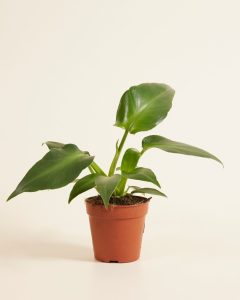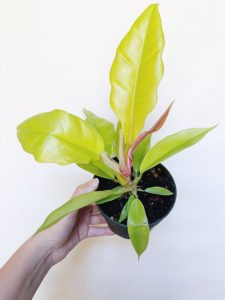- English
- Chinese
- French
- German
- Portuguese
- Spanish
- Russian
- Japanese
- Korean
- Arabic
- Irish
- Greek
- Turkish
- Italian
- Danish
- Romanian
- Indonesian
- Czech
- Afrikaans
- Swedish
- Polish
- Basque
- Catalan
- Esperanto
- Hindi
- Lao
- Albanian
- Amharic
- Armenian
- Azerbaijani
- Belarusian
- Bengali
- Bosnian
- Bulgarian
- Cebuano
- Chichewa
- Corsican
- Croatian
- Dutch
- Estonian
- Filipino
- Finnish
- Frisian
- Galician
- Georgian
- Gujarati
- Haitian
- Hausa
- Hawaiian
- Hebrew
- Hmong
- Hungarian
- Icelandic
- Javanese
- Kannada
- Kazakh
- Khmer
- Kurdish
- Kyrgyz
- Latin
- Latvian
- Lithuanian
- Luxembou..
- Macedonian
- Malagasy
- Malay
- Malayalam
- Maltese
- Maori
- Marathi
- Mongolian
- Burmese
- Nepali
- Norwegian
- Pashto
- Persian
- Punjabi
- Serbian
- Sesotho
- Sinhala
- Slovak
- Slovenian
- Somali
- Samoan
- Scots Gaelic
- Shona
- Sindhi
- Sundanese
- Swahili
- Tajik
- Tamil
- Telugu
- Thai
- Ukrainian
- Urdu
- Uzbek
- Vietnamese
- Welsh
- Xhosa
- Yiddish
- Yoruba
- Zulu
- Kinyarwanda
- Tatar
- Oriya
- Turkmen
- Uyghur

Mkpụrụ osisi dị mma na-acha odo odo na-acha odo odo na-acha odo odo na akụrụngwa na-akpụ akpụ gụnyere ceylon ọla edo Fishọn ọla edo. Ọ bụ ezie na osisi a na-agbanwe agbanwe na gburugburu ya, otu n'ime isi ihe na-ekwe nkwa mmepe ya bụ usoro ịgba mmiri. Mara otu esi ejikwa oge ị na-agba mmiri ceylon ọla edo na-arụ ọrụ dị oke mkpa na usoro nlekọta ma ọ bụ nke ukwuu nwere ike ịnwe mmetụta na-adịghị mma na osisi.

Ndi Okike Nkà Ihe Okike
Ceylon Golden Philodendron’s growth needs
Native to tropical rainforest environments, Ceylon Golden Philodendron has evolved to cope with high humidity and steady warm temperatures. Although the plant is rather thirsty, it also has some degree of drought resistance. Knowing Ceylon Golden Philodendron’s growth needs helps one to create a sensible watering schedule to support its good development.
A na-ahụkarị Fylon ọla edo na-ahụkarị mkpọrọgwụ na ala mmiri na gburugburu eke; Yabụ, mgbe tolitere n'ime ụlọ, anyị kwesịrị ịmeghachi ebe obibi. Ezigbo igbapu mmiri na ala dị mma kwesịrị ịnọgide na-enwe ọkwa mmiri dị mma. Osisi nwere ike ịta ahụhụ site na okpukpu abụọ nke ala ma ọ bụ nke ahịhịa; Yabụ, ijigide ahụike na-adabere na nlezianya nke ịgbara mmiri.
Mgbanwe na-emetụta oge ịgbara mmiri ceylon ọla edo phidedendron
A lot of elements influence the frequency of watering: light, temperature, humidity, soil type, and plant development stage. These elements influence Ceylon Golden Philodendron’s water requirements in great detail here:
kemfe
The water requirements of plants directly depend on light. When Ceylon Golden Philodendron’s transpiration is greater and the need for water will rise, the plant grows more aggressively in an environment with enough light. The transpiration is lessened and the water in the soil evaporates more slowly if the plant is in a location with low light, hence the frequency of watering should be lowered.
temperacho
Mmiri chọrọ nke osisi na-adabere na oke okpomọkụ. Ọ bụ ezie na ọpịpị na-eto eto dị n'etiti 18 na ogo 24 Celsius, Ceylon Golden Philodendron gbara ndị na-ekpo ọkụ. Ugboro ịgbara mmiri ga-aba ụba na ọnọdụ okpomọkụ n'ihi na ọnụego mmiri mmiri na-ebilite. N'oge oyi, mkpa mmiri tụlee, ọnụego ọnụego nke osisi na-efeda, a ga-ebipụ mmiri ahụ.
Iru mmiri
Ntọala iru mmiri dị elu bụ ebe Ceylon ọla edo ọla edo na-eme ka; N'ihi ya, iru mmiri dị ezigbo mkpa maka mmepe ya. Ọ bụrụ na iru mmiri n'ime ụlọ ime ụlọ dị ala, ọnụego nke osisi ga-ebili, nke nwere ike ịchọ ka mmiri mmiri mgbe niile iji nọgide na-agba mmiri mmiri. Ma ọ bụ humitifier ma ọ bụ mmiri mmiri gbara gburugburu osisi ga-enye aka ichekwa iru mmiri ikuku.
Ofdị ala
The watering need of the plant is largely influenced by the soil’s drainage and water retention capacity. Ceylon Golden Philodendron calls for well-drained soil. Poorly drained or too heavy soil may let water build up and lead to root rot. Using mixed soil with peat, vermiculite or perlite will assist regulate watering frequency and enhance soil drainage.
Ogbo nke ihe ọkụkụ
Water needs will also depend on the plant’s growing stage. Ceylon Golden Philodendron grows quicker and needs more water to sustain its development in the peak growing season—that of spring and summer. During the dormant season—that of fall and winter—the plant’s water needs drop and its growth rate slows down. Watering should be reduced during this period.
Na-achịkwa ugboro ole ịgbara mmiri ceylon ọlaedo ọla edo.
Dabere na ntụle a na-atụle, oge ị ga-agba mmiri kwesịrị ịdịtụ n'okpuru iji mee ka ezigbo mmepe nke Ceylon Golden Golden Golden Golden Golden Golden. Ndị a bụ ụfọdụ echiche na usoro dị iche iche:
Ghọta ala mmiri
One efficient approach to decide when to water is using soil moisture detection. Touching the ground’s surface will help you to sense its moisture. You should think about watering if the surface of the soil is dry and the soil about two to five centimetres is also somewhat dry. Should the soil remain damp, you should wait for further watering. Another handy detecting tool is a soil moisture meter, which will let you more precisely evaluate the moisture content of the ground.
Following the “see dry and see wet” idea
One of the best strategies to regulate watering frequency is the “see dry and see wet” one. That is, water when the ground’s surface is dry; steer clear of watering when the ground is still damp. This helps to lower the overwatering-related root rot risk. Make sure the water you water can reach the root region rather than only dampening the ground’s surface.
Gbanwee usoro onunu ogwu.
Ihe achọrọ mmepe nke osisi na gburugburu kwesịrị iduzi ọnọdụ mmiri. Ihe achọrọ maka mmiri dị ukwuu na ceylon ọla edo phidedendron na-eto karịa nke ukwuu na mmiri na ọkọchị. Enwere ike ịmalitegharị nke ogbugba mmiri n'ubi ugbu a. A ga-agbada nke ịgbara mmiri n'oge mgbụsị akwụkwọ na udu mmiri iji gbochie ọtụtụ mmiri na-esite na mmiri dị ka ihe ọkụkụ nke osisi na-agbada na mkpa mmiri.
Kpebie oge ịgba mmiri kwesịrị ekwesị.
Na-ahọpụta oge ịgba mmiri kwesịrị ekwesị nwekwara ike inye aka ilegide osisi ahụ dị mma. A ga-agba mmiri n'oge oyi mgbe ọnọdụ dị elu karịa ụbọchị niile iji mee ka mmiri na mmiri mmiri. Zọpụrụ mmiri na mgbede chiri anya iji zere ịhapụ mmiri ifriizi na ọnọdụ okpomọkụ nke nwere ike iduga na ntu oyi.
Rịba ama mgbanwe gburugburu ebe obibi.
Ihe a chọrọ mmiri nke Ceylon ọla edo ọlaedo na-agbanwe agbanwe na gburugburu ebe obibi. Dịka ọmụmaatụ, okpomọkụ ime ụlọ na iru mmiri nwere ike ịdị iche na oge. A ga-agbanwerịrị ugboro ugboro ugboro a iji gosipụta ezi ọnọdụ. Iji maa atụ, enwere ike ịchọrọ ya iji bulie iru mmiri ma ọ bụ gbanwee ugboro ole ị ga-enwe ga-adaba na ọnọdụ na-agbanwe agbanwe mgbe ọ na-ekpo ọkụ ma ọ bụ ikuku na-agbanwe agbanwe.
Ihe isi ike na ọgwụgwọ
Ijikwa ugboro ugboro nke ceylon ọla edo na-eme ka ọtụtụ nsogbu dị. Ihe ndị a bụ okwu ole na ole yana ndozi ha:
Nkpọrọgwụ na-emebi emebi
Ma ọ bụ mmiri na-akpata kpamkpam na-akpata kpamkpam na-akpata kpamkpam. Na-ebelata ugboro ole ịgbara mmiri, na-ejide n'aka na a na-adọta ala nke ọma, ma na-achọ ire ere na usoro mgbọrọgwụ gụnyere ụfọdụ ngwọta. Ọ kwesịrị mgbọrọgwụ nke mgbọrọgwụ, a ga-ewepụsị mgbọrọgwụ a ga-edozigharị n'oge ma dochie ya na ala ọhụrụ.
Epupụta edo edo
Either inadequate or too much irrigation might cause yellowing of the leaves. Check the soil’s wetness first. Should the soil be too dry, you should boost watering; should the soil be overly moist, you should cut watering and investigate the soil drainage. Yellowing leaves might also be the result of inadequate nutrition; so, appropriate fertilisation is required to encourage the good development of the plant.
Ndụmọdụ maka akwukwo
A na - ejikọkarị iru mmiri ikuku dị ala bụ nkụ akwụkwọ. Bulite iru mmiri nke ikuku - nke ahụ bụ, site na ịgba ịnyịnya na ihu igwe ma ọ bụ na-ekpuchi ihe ọkụkụ ahụ na-enyere aka idozi nsogbu a. N'otu oge, lezie anya nke idobe osisi ahụ na gburugburu ebe a kpọrọ nkụ ma na-eji sprayer bulie iru mmiri.

Philodedendron
Ijikwa mmepe ahụ dị mma nke Ceylon Golden Golden Philodendron na-adabere na nlezianya nke ịgbara mmiri. Ghọta ihe ọkụkụ chọrọ nke osisi, ihe ndị na-emetụta ugboro ole ịgbara mmiri, na mmejuputa ya ga-enyere gị aka ijikwa ala ala ma gbochie ma ọ bụ mmiri. Ewezuga na-akwalite mmepe ọma nke osisi, njikwa mmiri nwere ezi uche na-eme ka ọ dị mma. Iji jide n'aka na Ceylon ọla edo na-arụ ọrụ kachasị na mpaghara ime, ị ga-amarakwa n'ọnọdụ ya ma gbanwee ya dabere na gburugburu ebe obibi na ihe ọkụkụ chọrọ.
Previous News
Protect Ceylon Golden Philodendron from freezin...Next News
Pruning to promote branching of red-faced philo...


